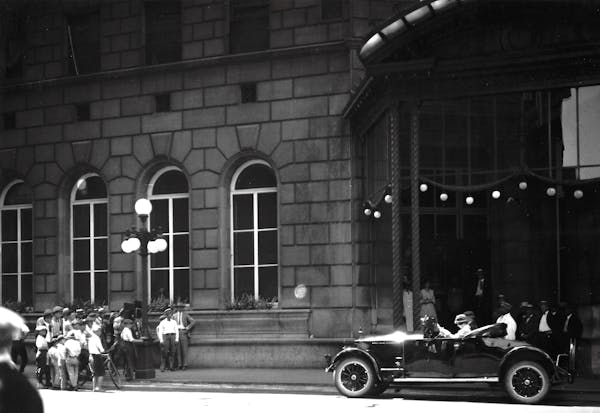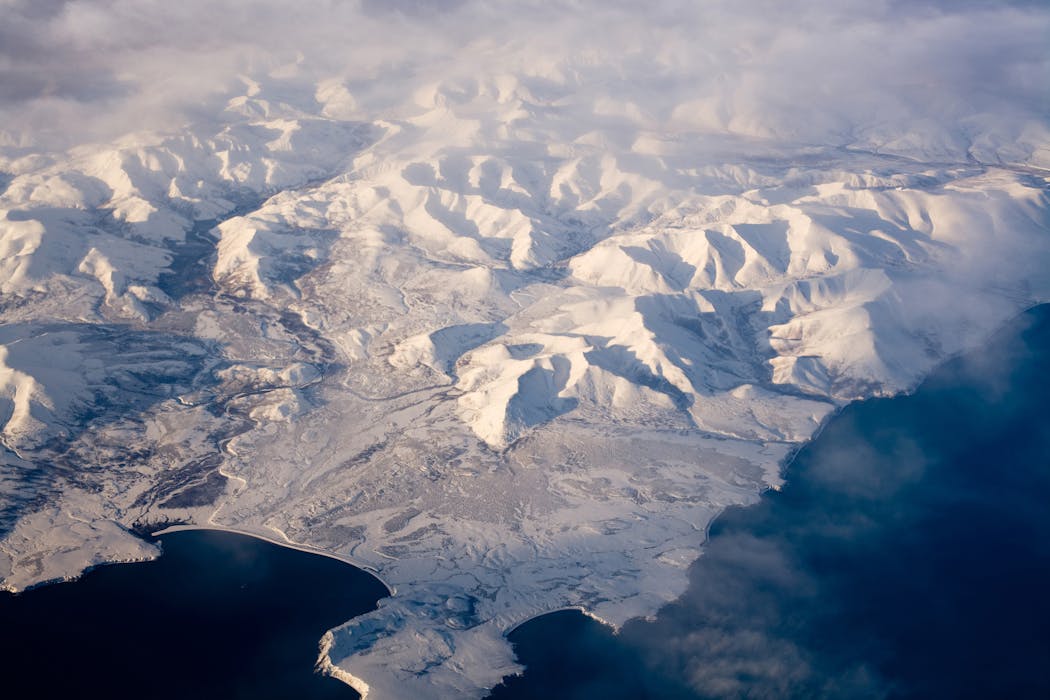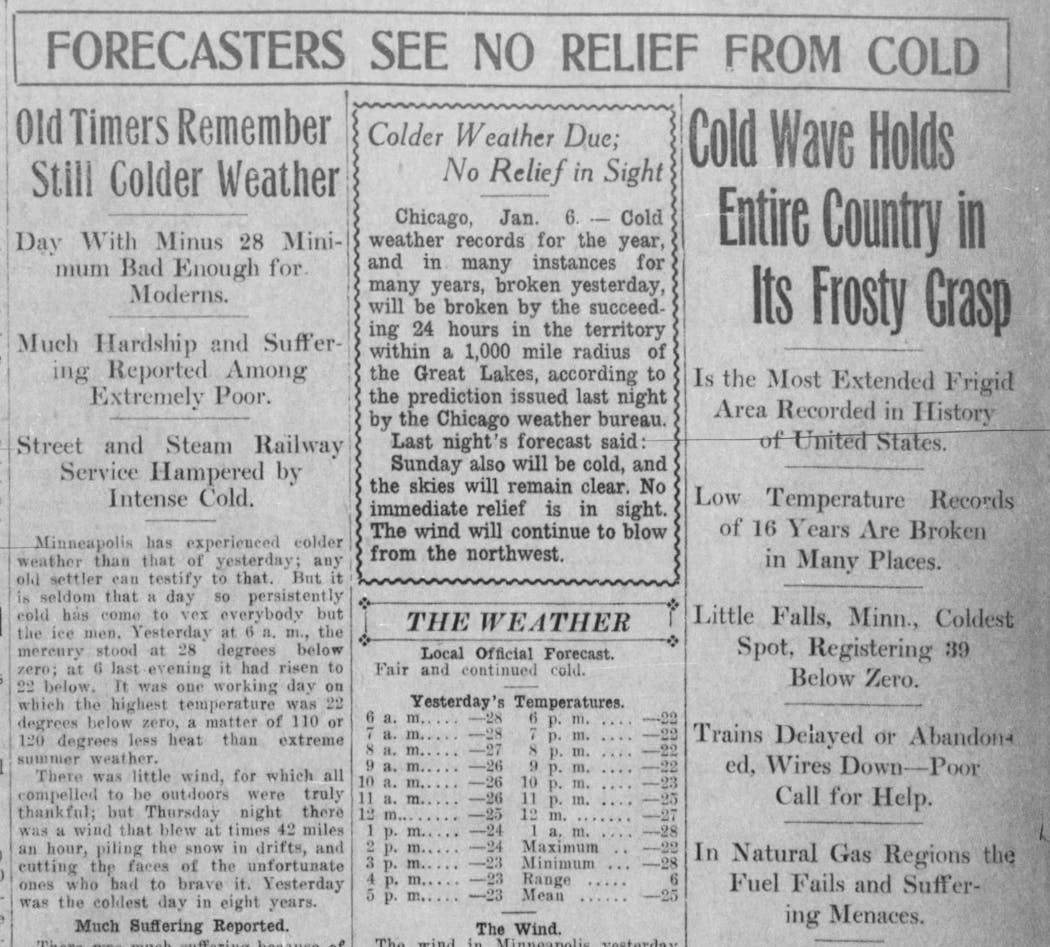Why does Minnesota sometimes get colder than the North Pole?
Listen and subscribe to our podcast: Via Apple Podcasts | Spotify | Stitcher
America's Siberia. The icebox of the nation. "Unfit for human habitation." Minnesota's cold weather is the stuff of legend. "Cold" is a defining feature of the state's culture.
But how cold is it, really?
That's what teacher Logan Jensen's sixth-grade science class wanted to know while recently studying the Earth's tilt. Specifically, the students inquired why Minnesota is sometimes colder than the icy climate of Santa's hometown, the North Pole.
So Jensen wrote on their behalf to Curious Minnesota, the Star Tribune's reader-powered reporting project. It is a simple question with a surprisingly complicated answer.
Peter Boulay, a climatologist with the Minnesota DNR, says that to even begin to explain, you must first clarify which North Pole you mean.
The true North Pole — the northernmost part of the Earth — is largely ice and does not contain an official weather documenting station. So there is no way to consistently analyze temperatures there. You instead have to rely on data collected at the nearest weather station: Cape Morris Jesup, about 440 miles south along the northern coast of Greenland.
Boulay explains that when people refer to the North Pole, they sometimes mean North Pole, Alaska, about 20 minutes outside of Fairbanks. (Google "weather at the North Pole," and the top result is about that Christmas-themed town.)
One thing is clear about both North Poles, however. They are consistently much colder than Minnesota.
"Hands down," Boulay said.
But there have been exceptions. As most Minnesotans know, the state can be victim to dramatic drops in temperature during the winter.
The record for the lowest temperature recorded in Minnesota was set on Feb. 2, 1996. The temperature dropped to 60℉ below a few miles outside Tower, Minn., in St. Louis County. That same day at Cape Morris Jesup weather station in Greenland, it was a toasty 38℉ below.
In true Minnesota style, the cold weather was intense but brief. Tower's temperature rose over 100 degrees within the week, hitting 48℉ on Feb. 8.
Minnesota's occasional extreme temperatures stem from the fact that it is missing one very crucial weather stabilizer: an ocean.
"What it comes down to is, we're about as far away from the ocean as you can probably get," Boulay said. "And because of that, we don't have the modifying winds that come with it."
He explains it like this: Minnesota can get very hot or very cold, since being in the middle of the continent puts the state at the mercy of air masses. When, for example, a cold air mass comes down from Canada, there are no ocean winds to push it away. Without winds, the cold, dense air accumulates in pockets around the state. This creates cold fronts that last for days, weeks or (in some infamous cases) a whole month.
January 2022 will mark the 110th anniversary for the coldest January ever recorded in Minnesota. In 1912, a cold snap dropped the statewide average temperature for Minnesota to nearly 10℉ below.
In the north, Polk County had temperatures below zero every single night for the entire month. Even in the southern half of the state, which generally stays much warmer compared to areas around the Canadian border, records show that the Twin Cities experienced 186 consecutive hours of below-0 temperatures.
For even more Minnesota weather records, be sure to check out the Minnesota Department of Natural Resources' Climate Journal. Run by Boulay, it is the official weather history of Minnesota.
The journal entries keep track of any big weather events around the state, including storms, new records, unusual phenomena and historical patterns. They update frequently, something Boulay says is a necessity.
"You know the saying: 'If you don't like the weather in Minnesota, just wait a minute,'" Boulay says. "If you like variety, this is the place to be. It always surprises you."
With those surprises, Minnesotans can count on the fact that, unlike in the North Pole, the cold will always end.
If you'd like to submit a Curious Minnesota question, fill out the form below. If you are a classroom with a question for Curious Minnesota, send an e-mail to curious@startribune.com.
Read more Curious Minnesota stories:
Were Minneapolis' skyways first created to combat the cold – or something else?
How did Minnesota's indigenous people survive the extreme winters?
Does Minnesota have the coldest and longest winters of any of the US states?
Should you really let your car run on cold mornings before driving it?
Is Minnesota cloudier in the winter or does it just seem that way?
How did early settlers survive their first Minnesota winters?





